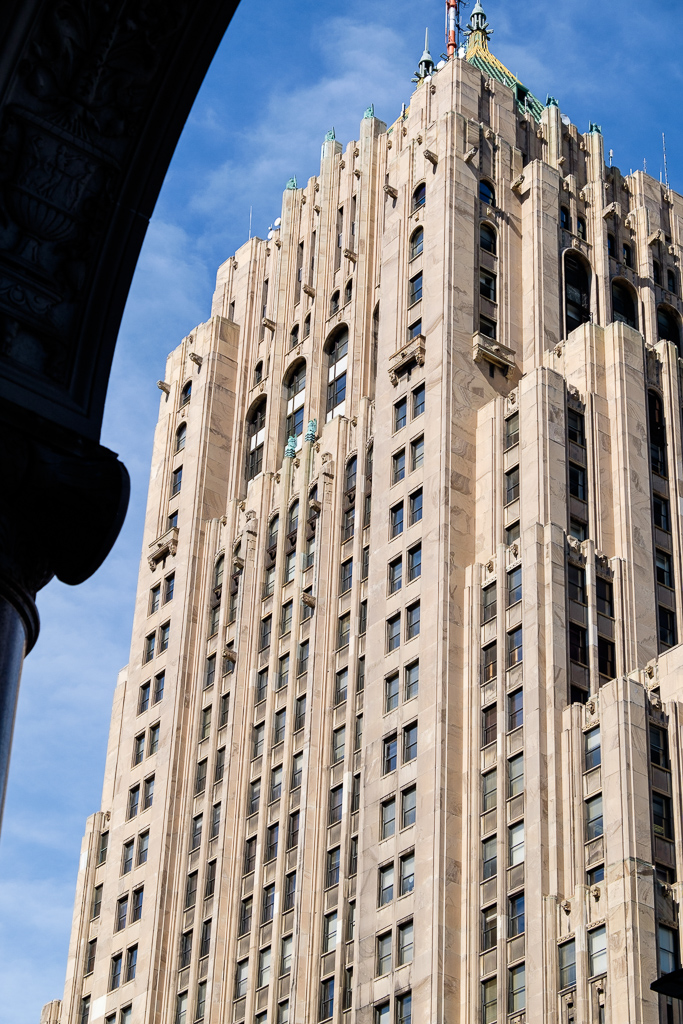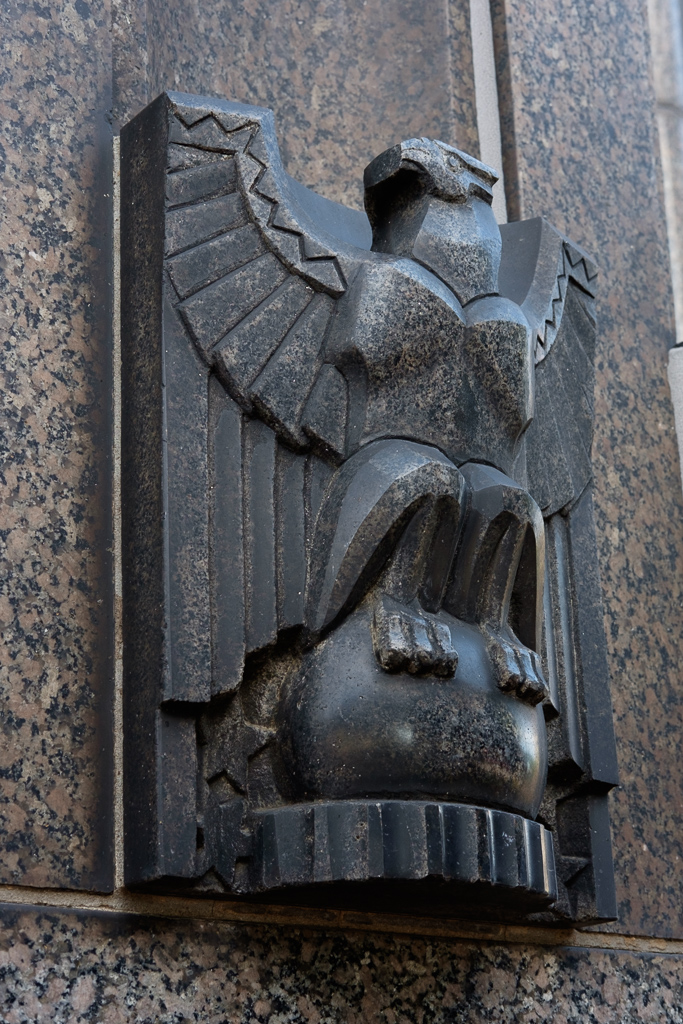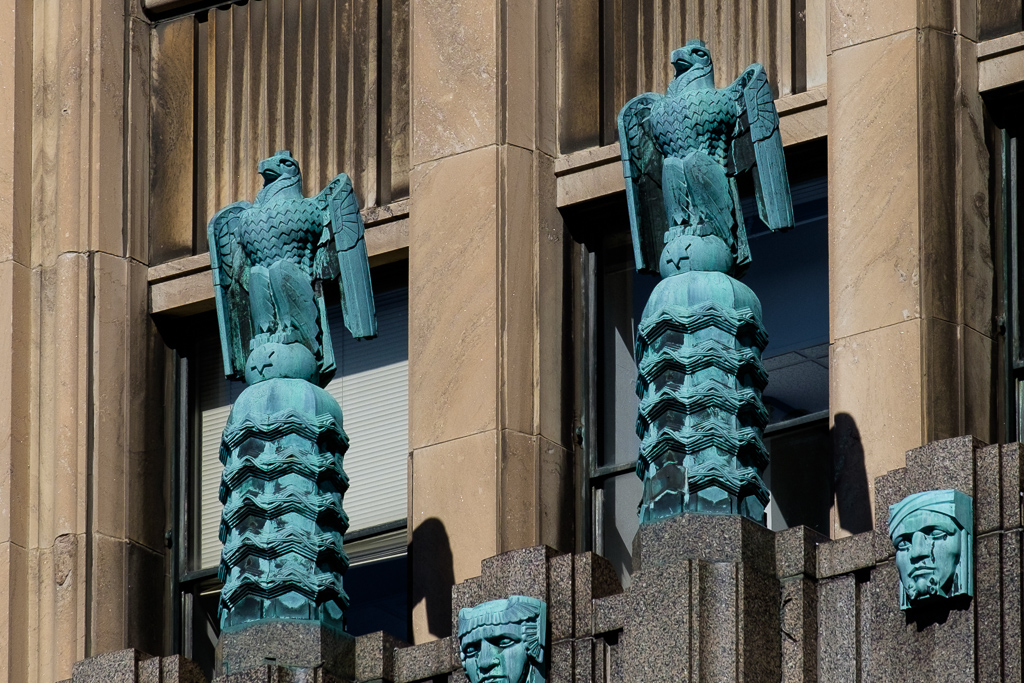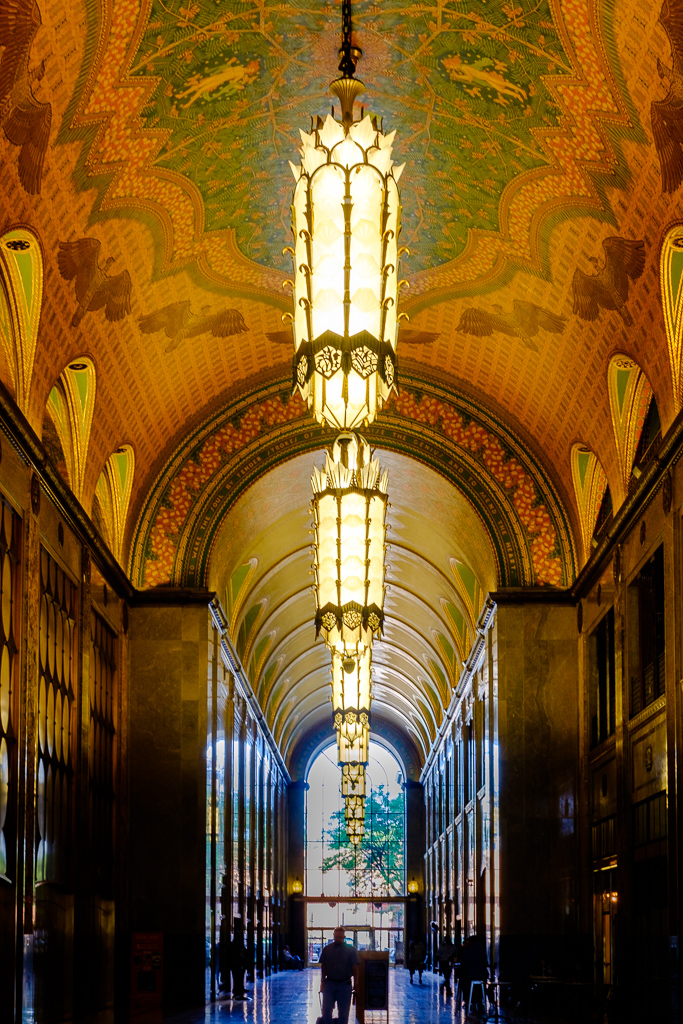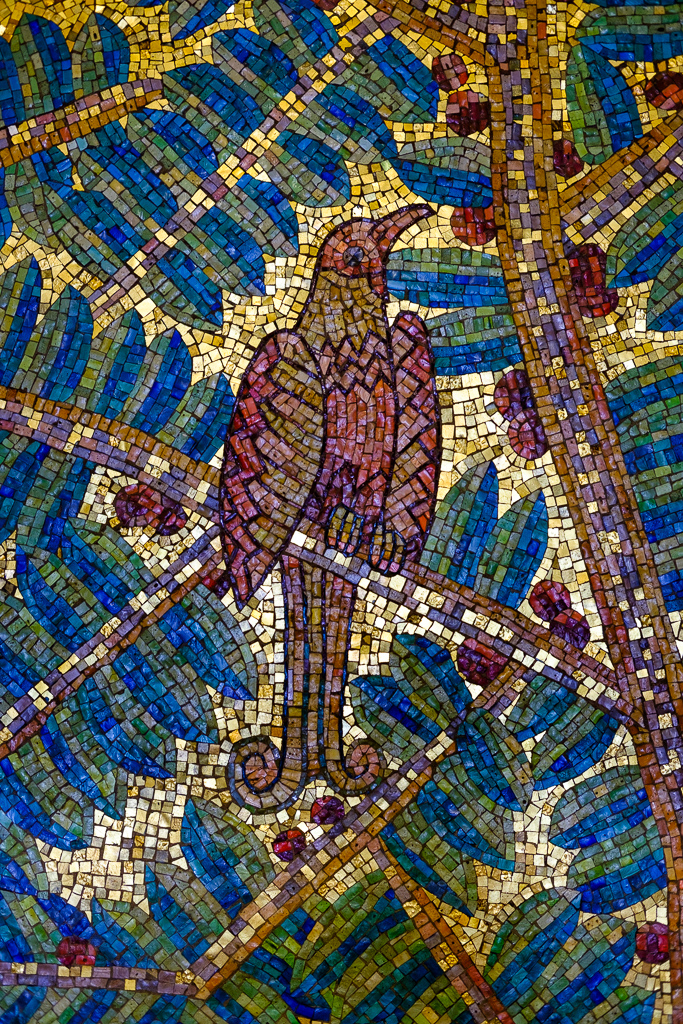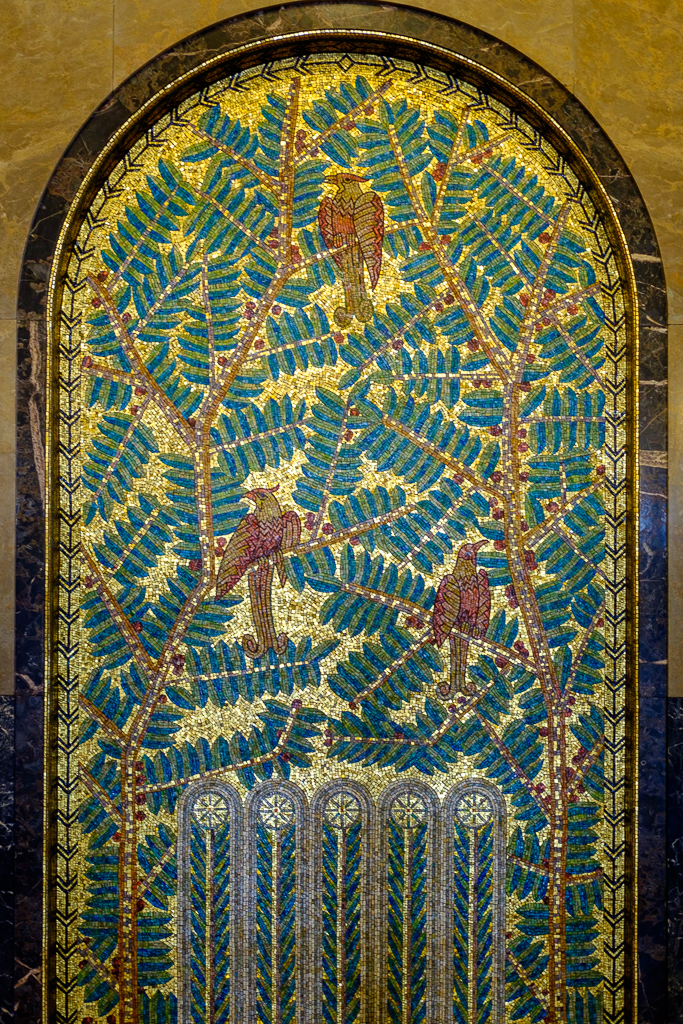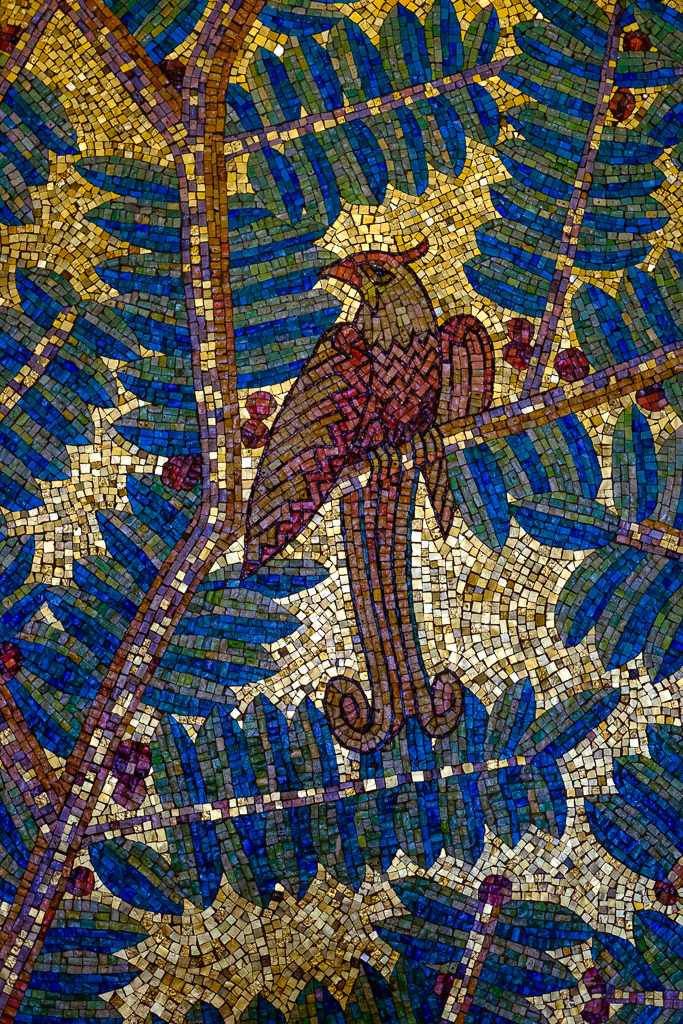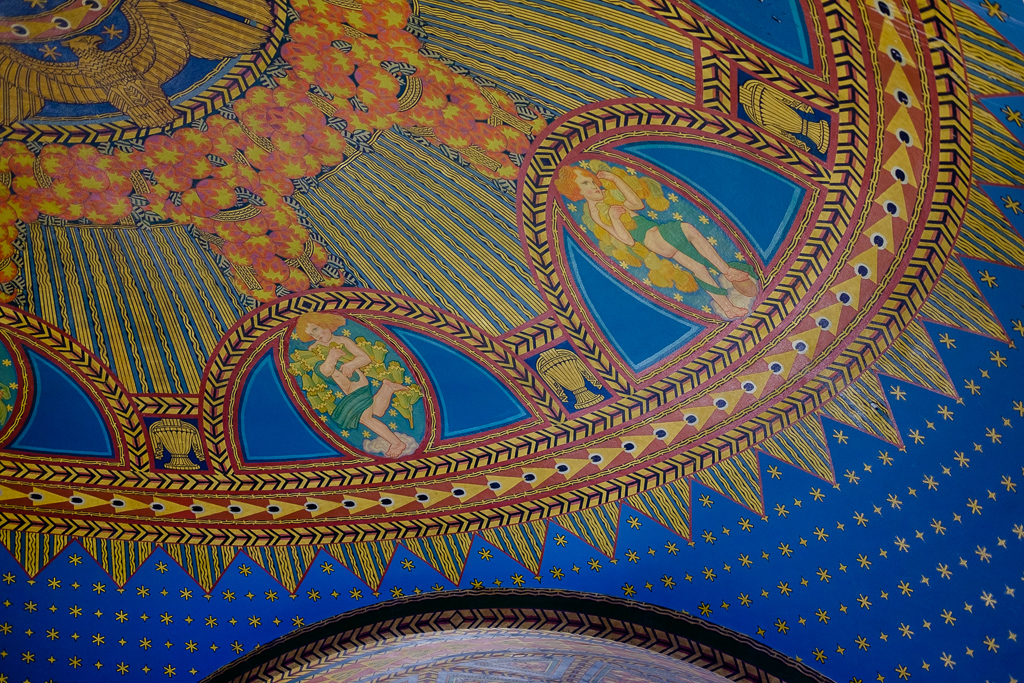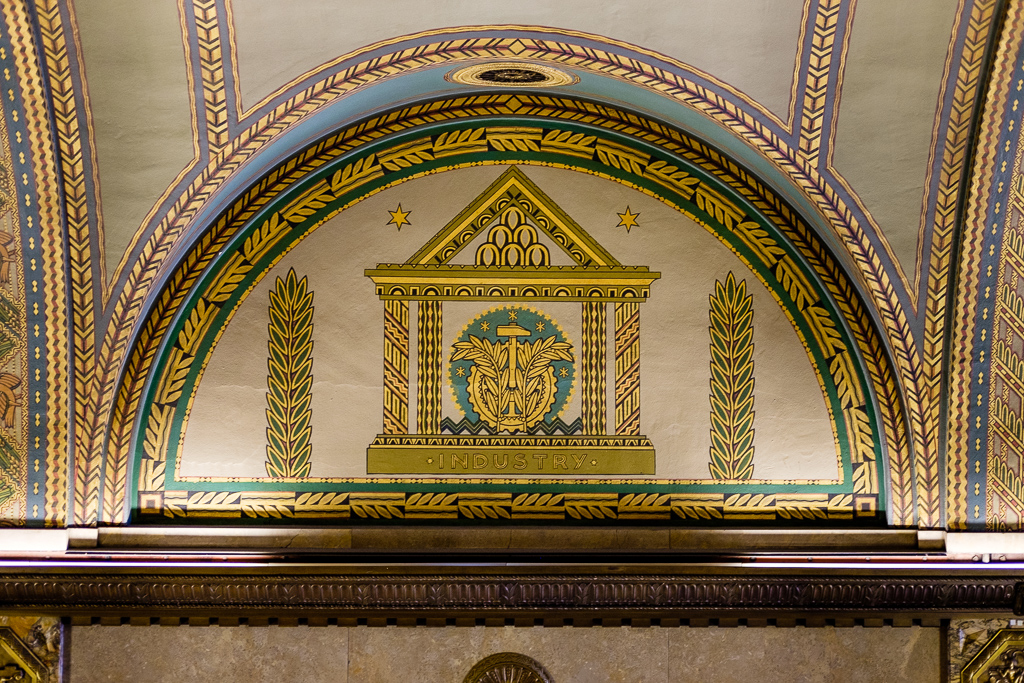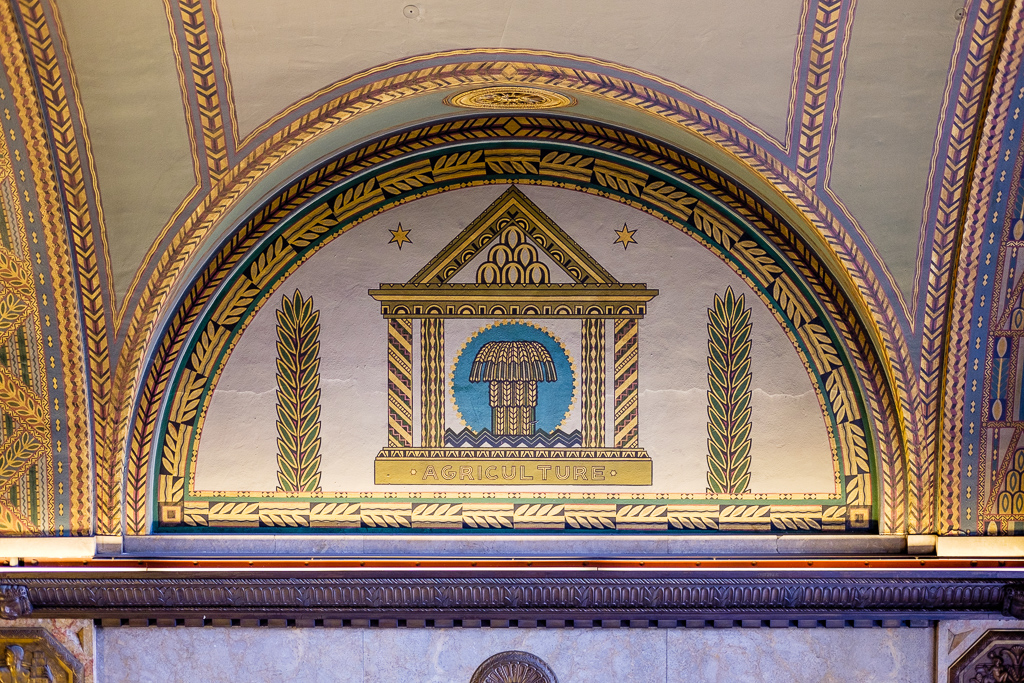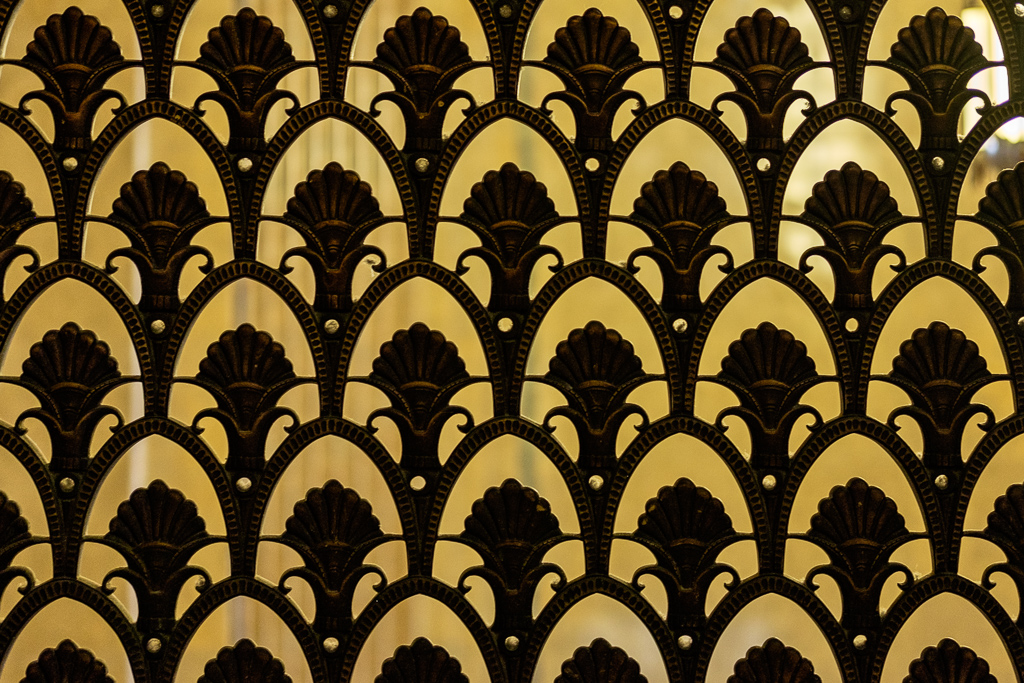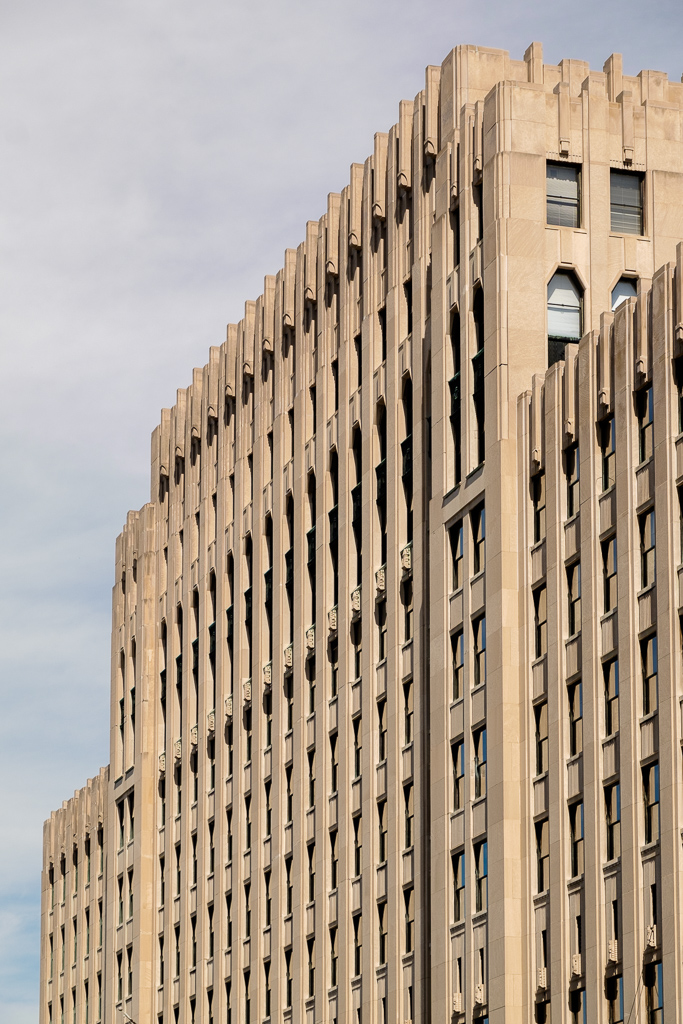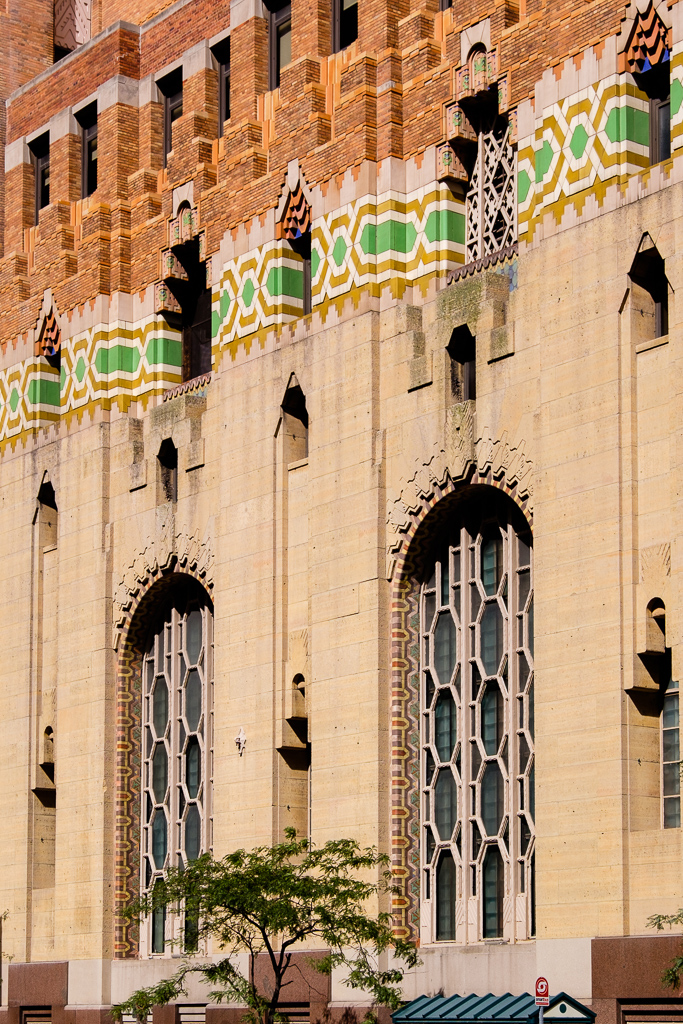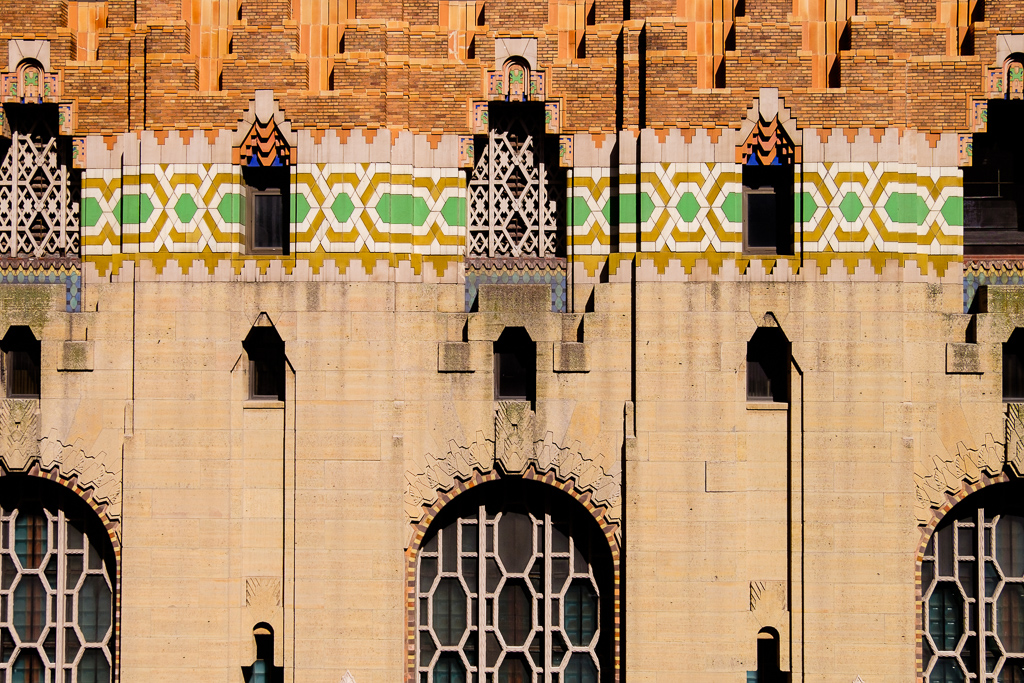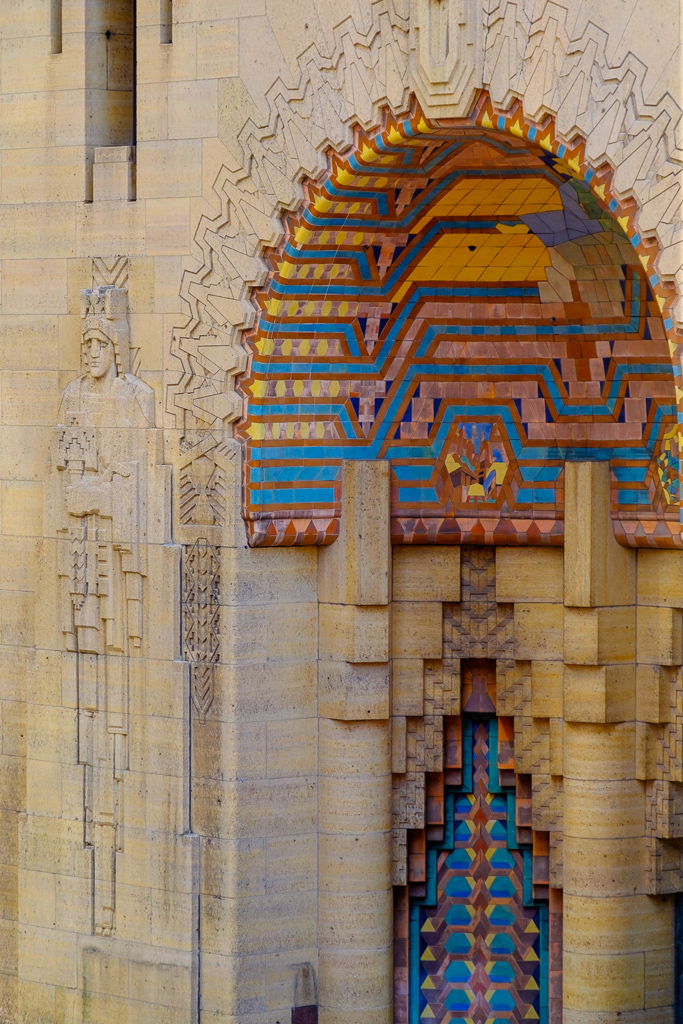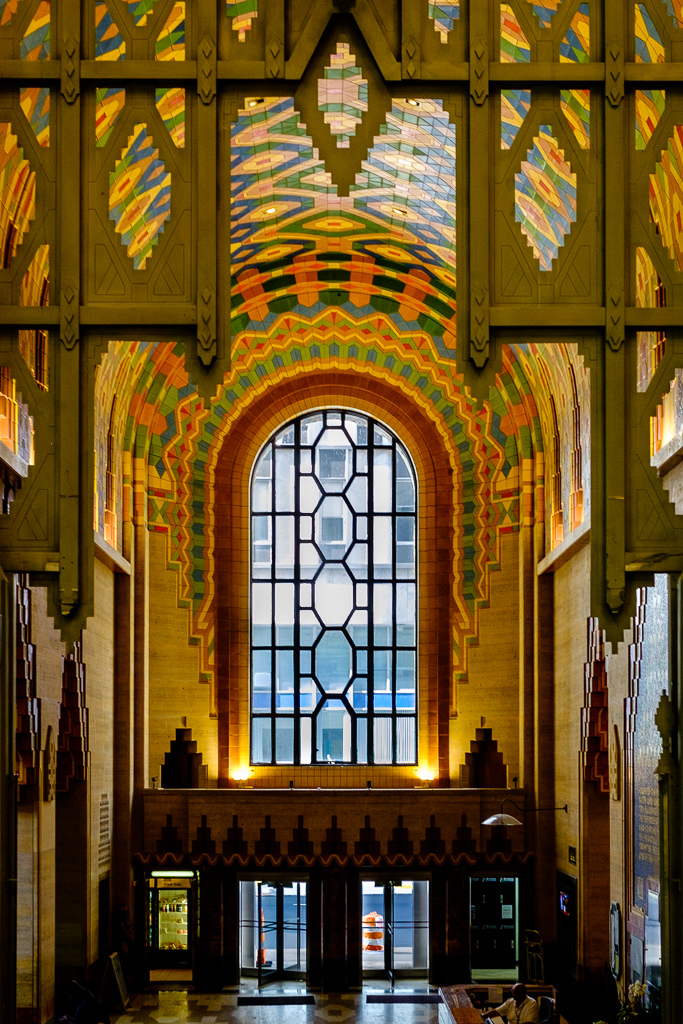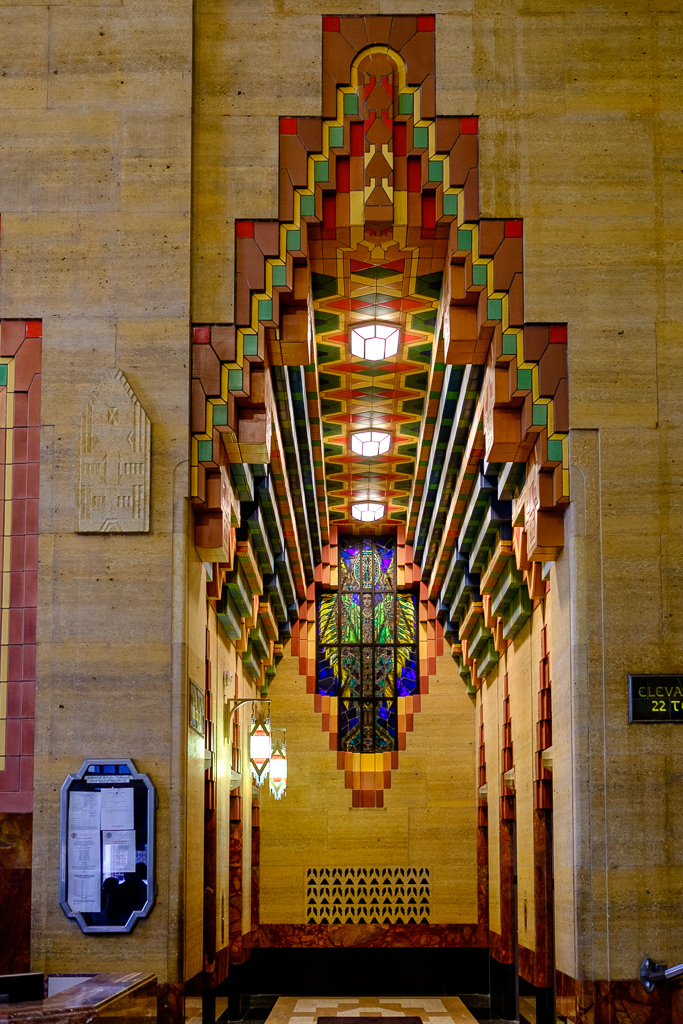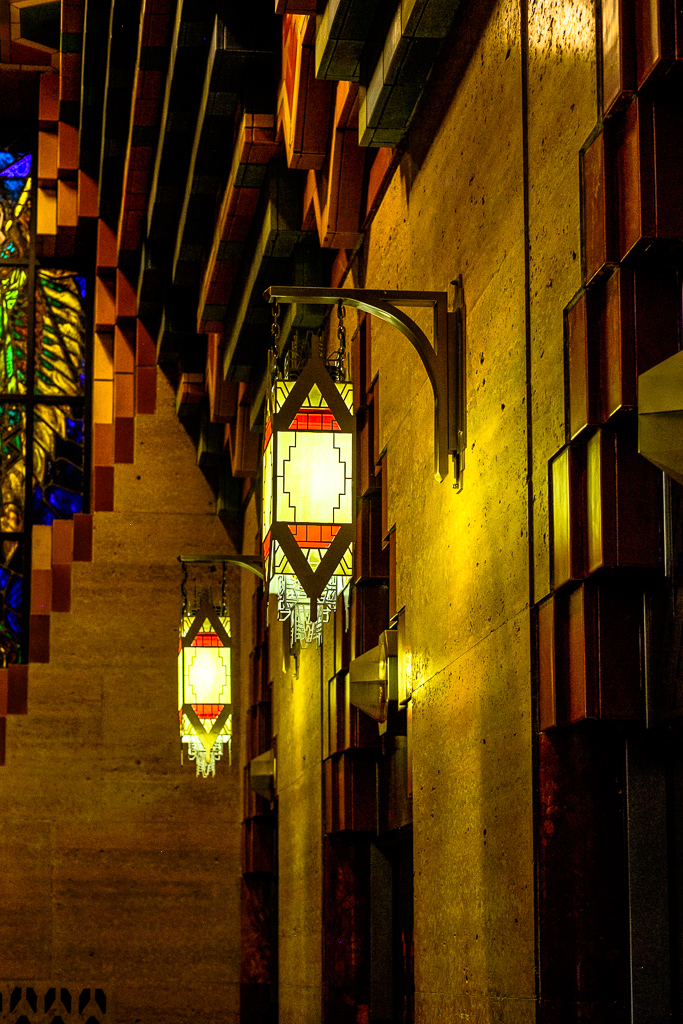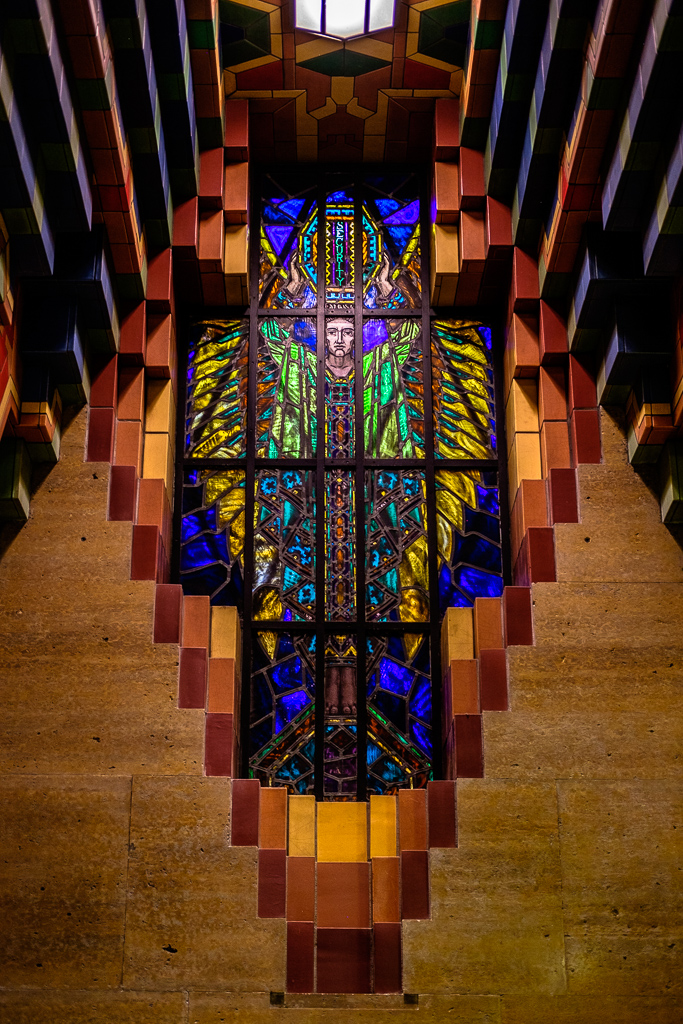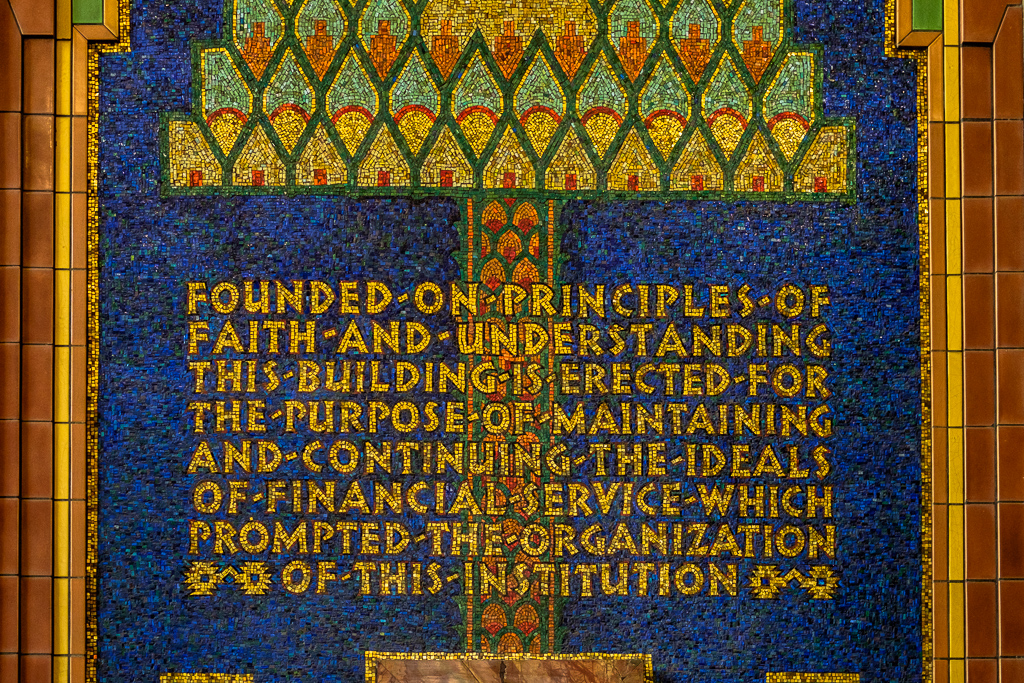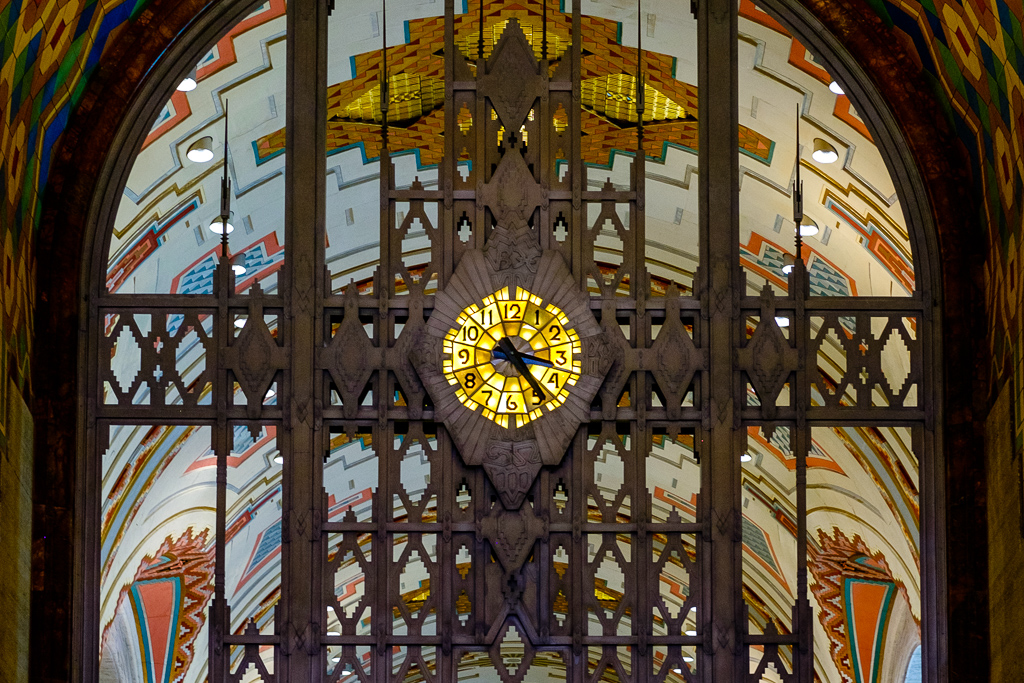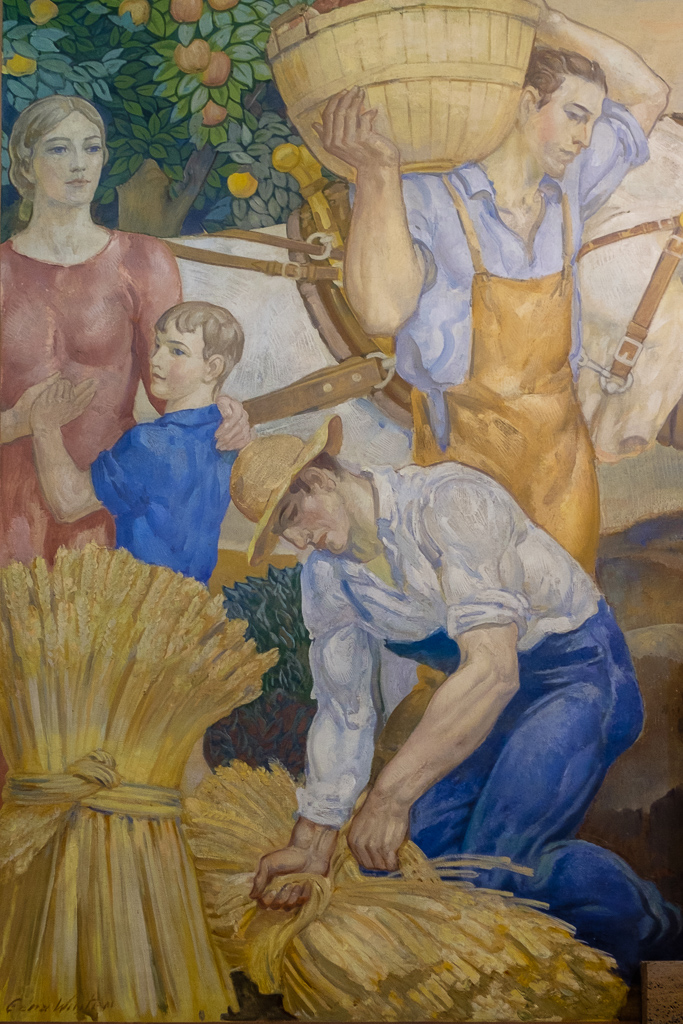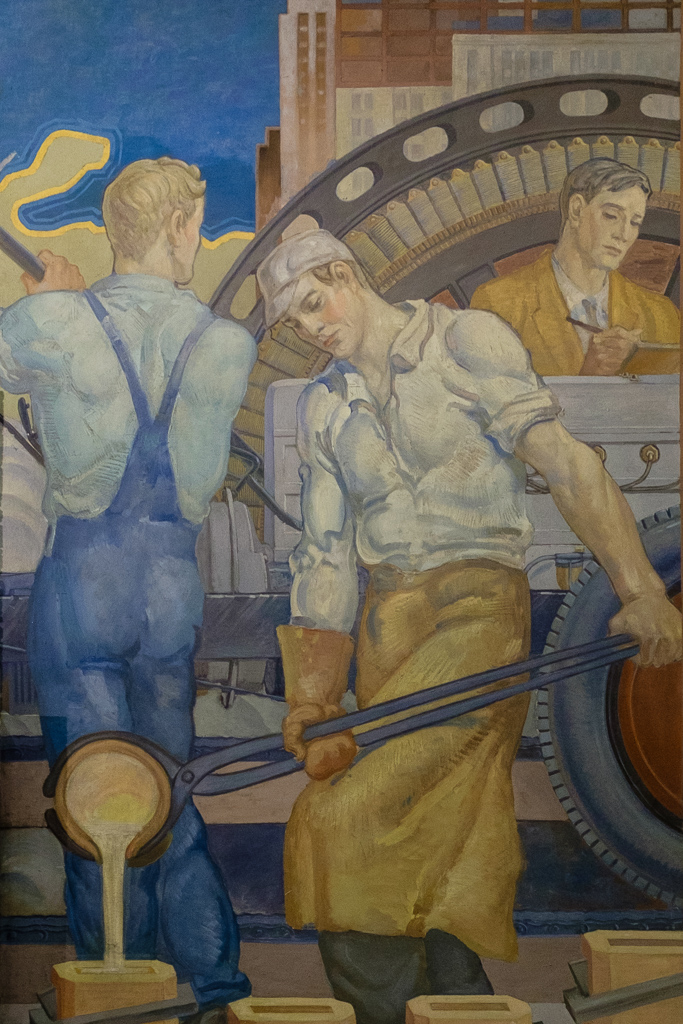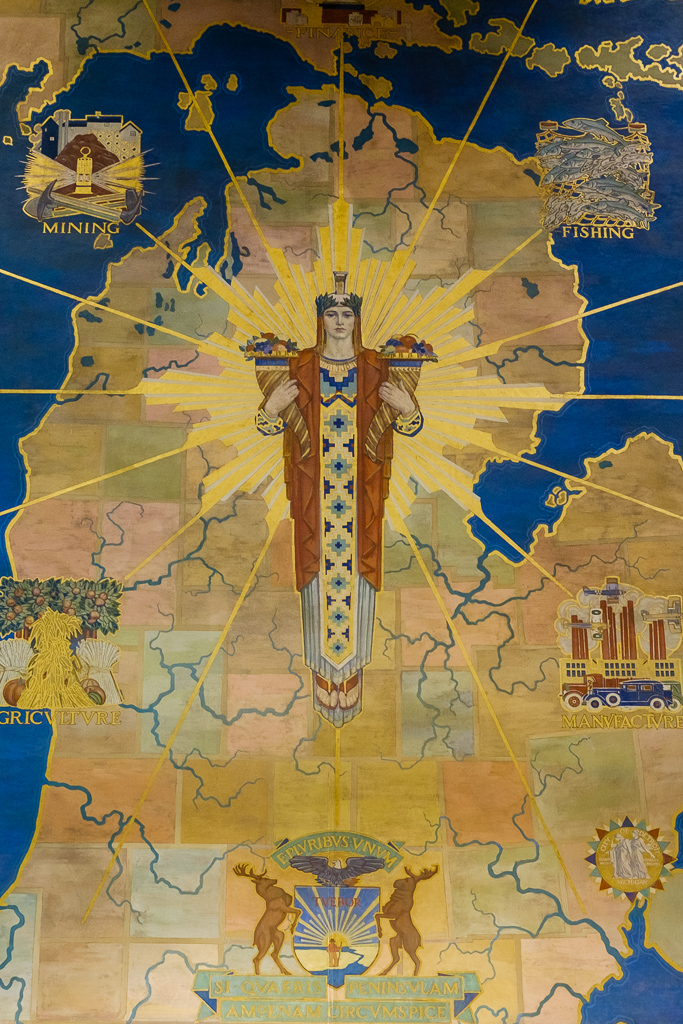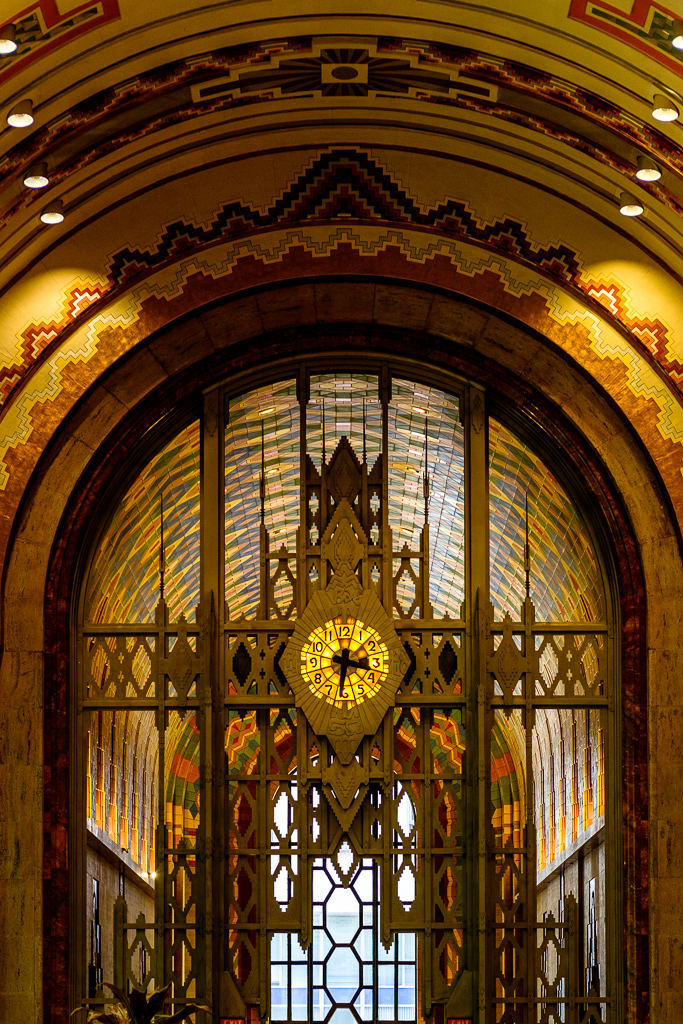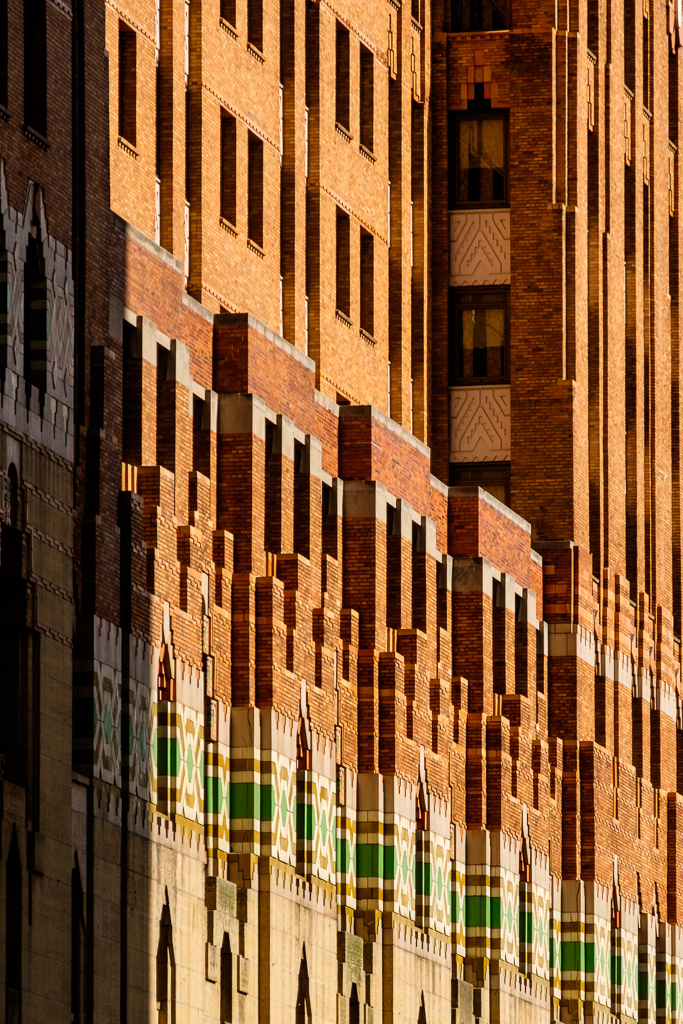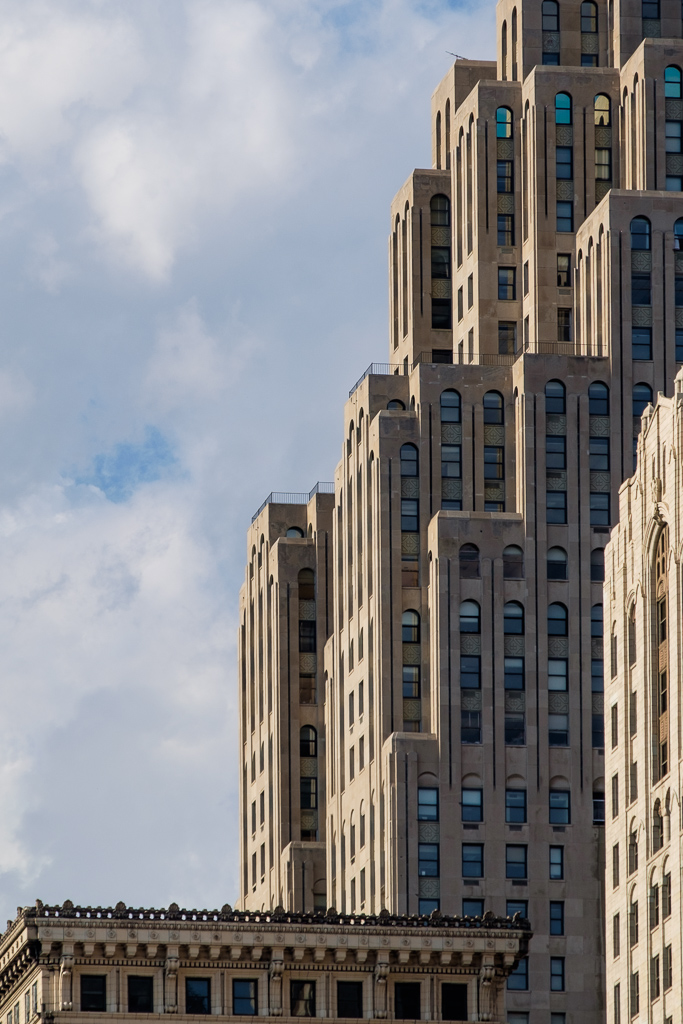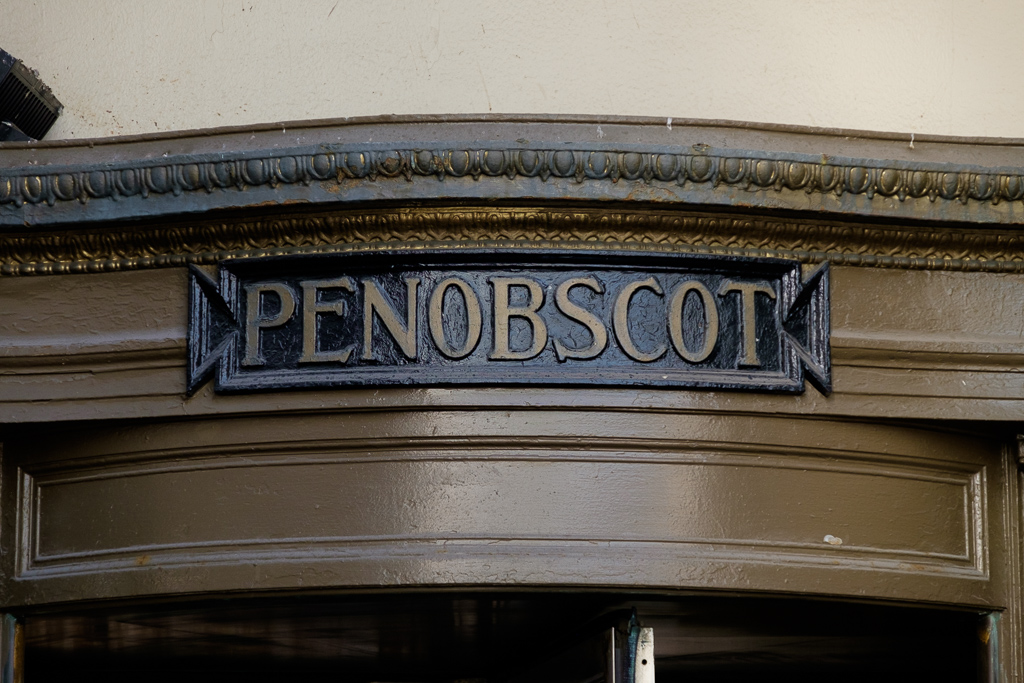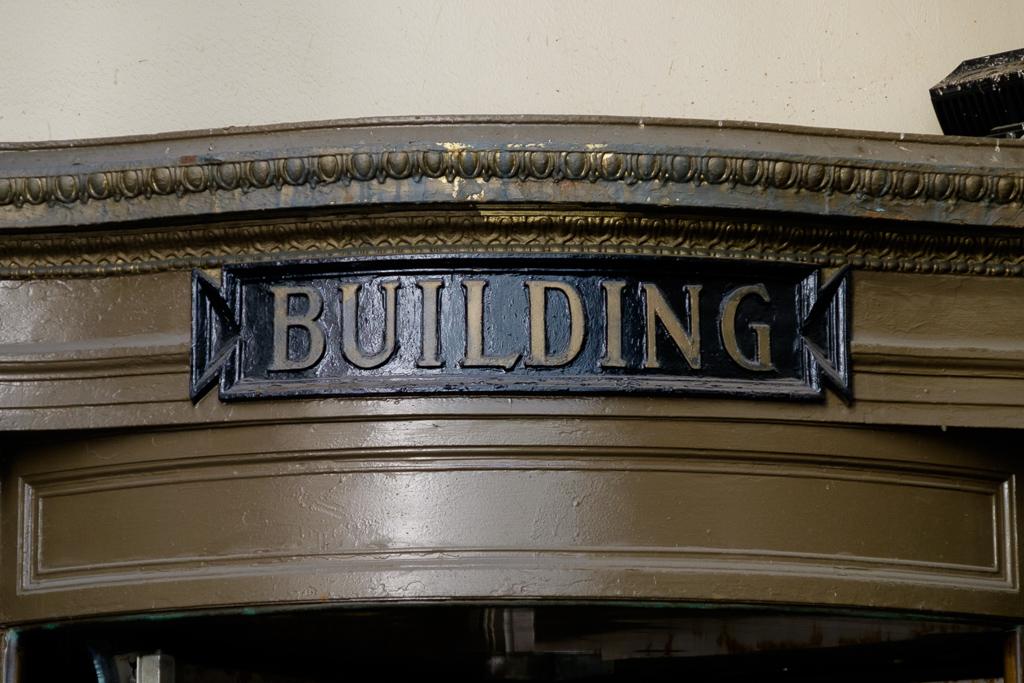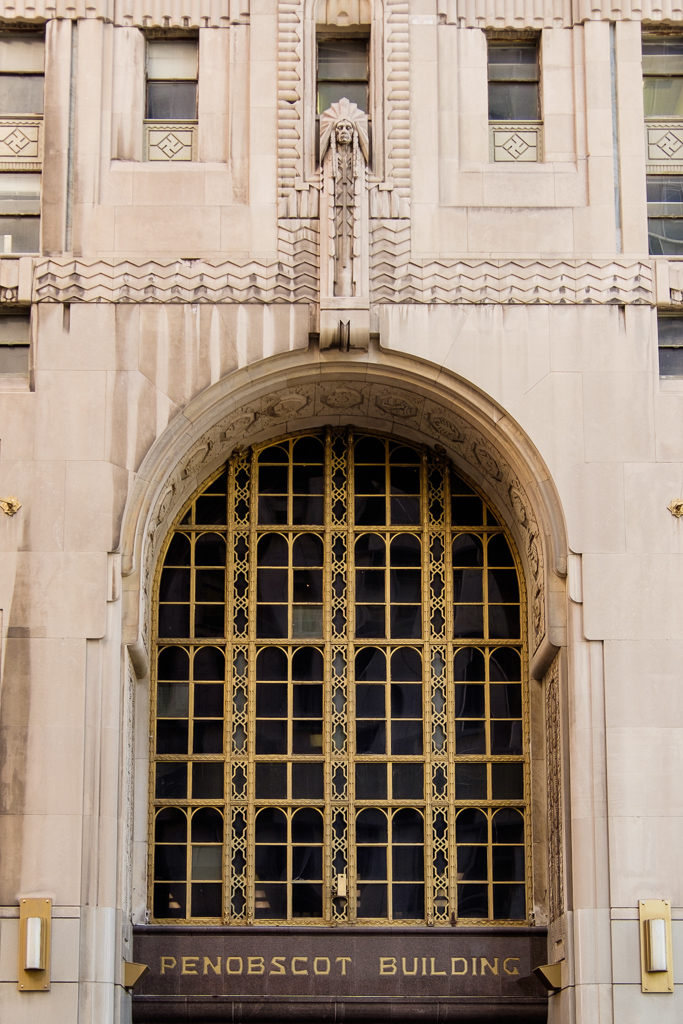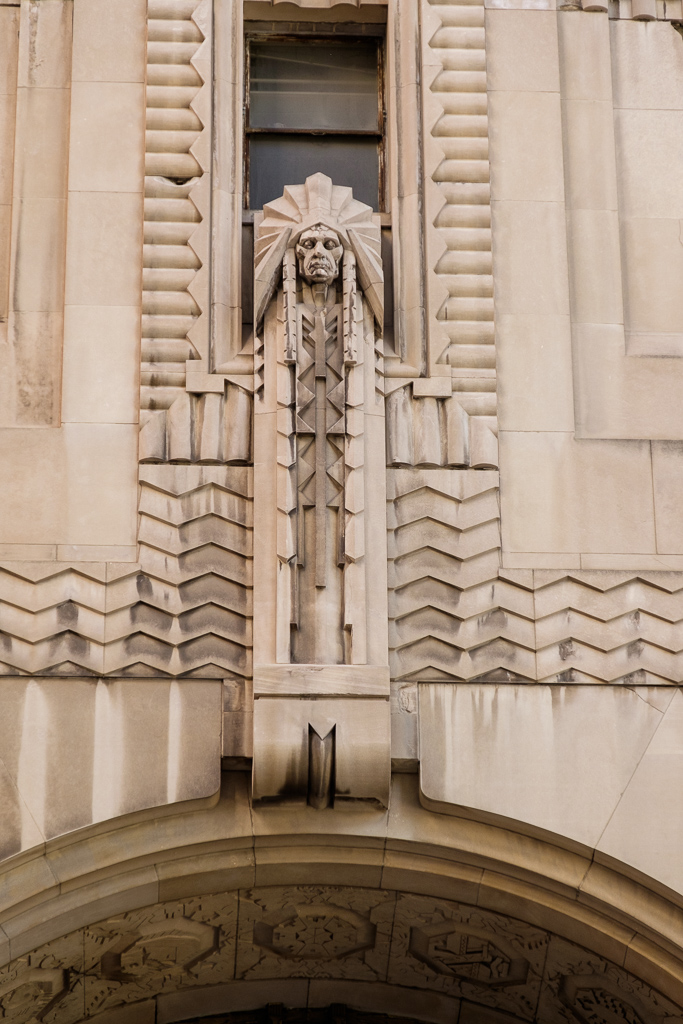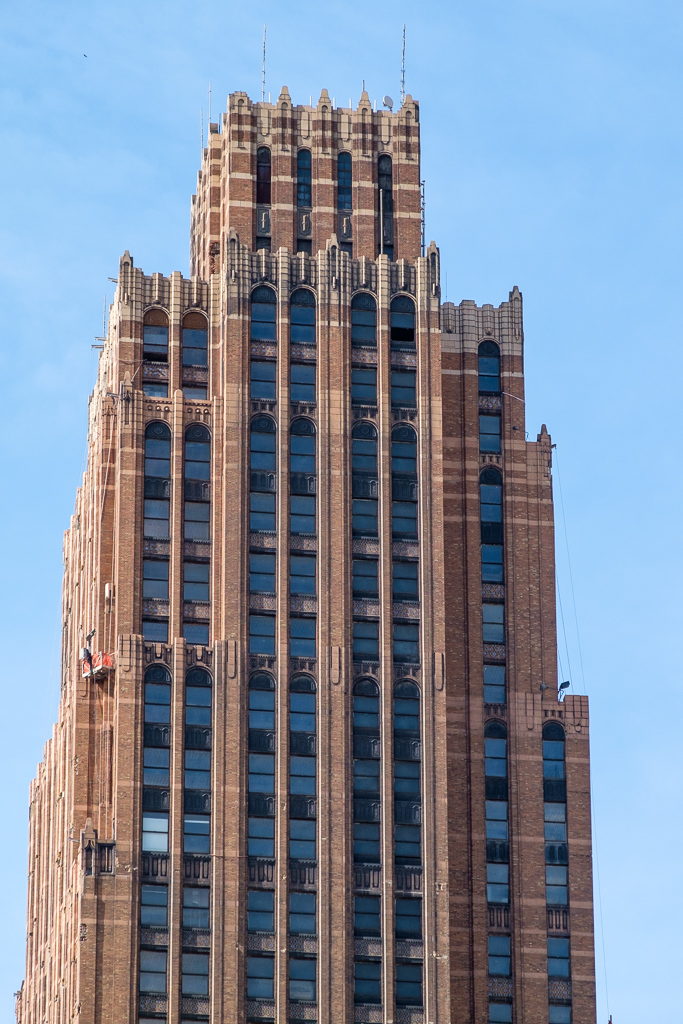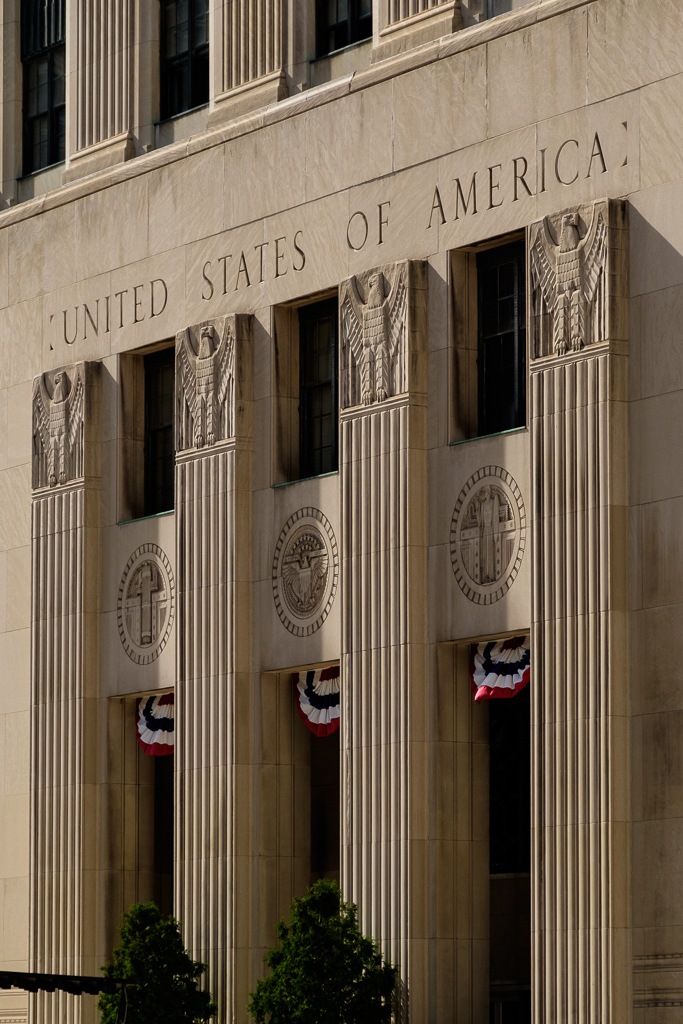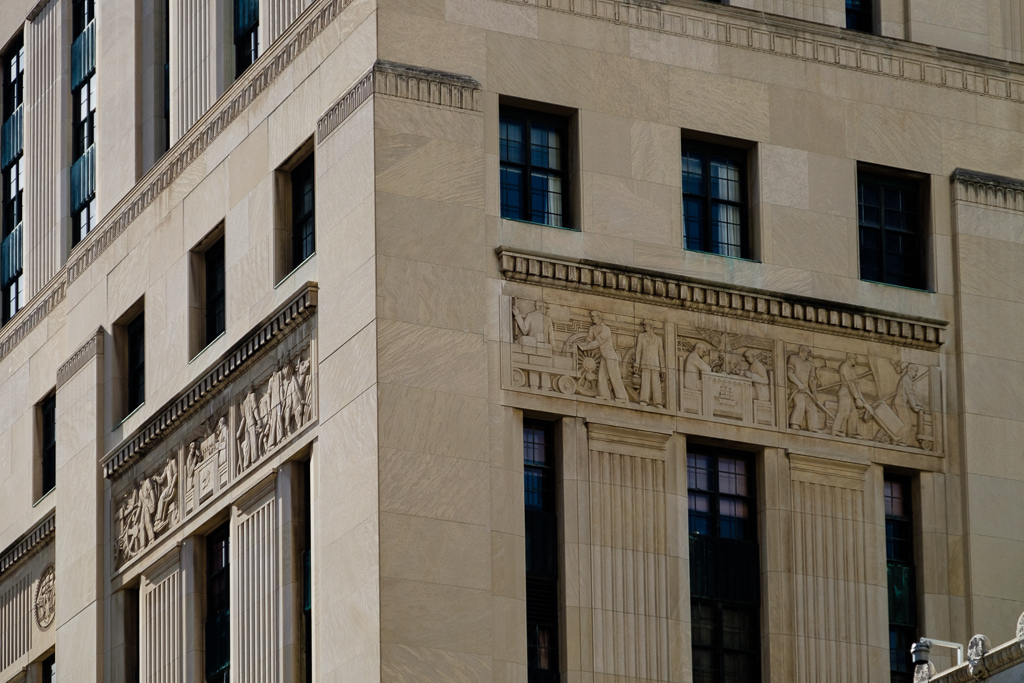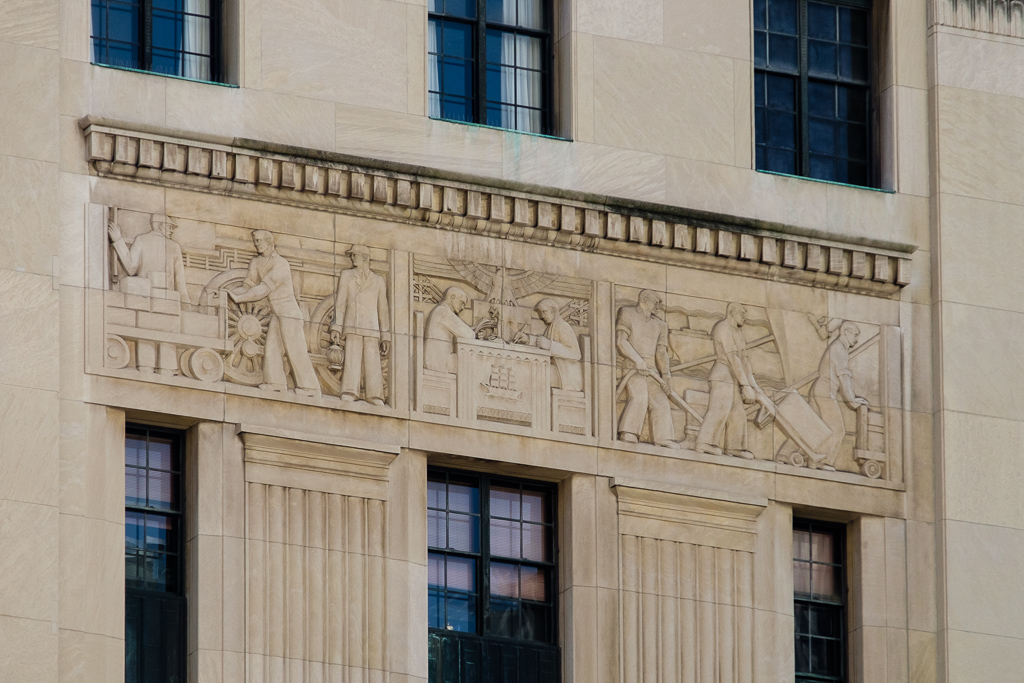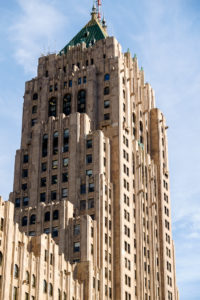 In my travels in the USA I have seen and photographed a lot of amazing art deco architecture: Miami and Miami Beach, Philadelphia, Tulsa (Oklahoma), Lincoln and Omaha (Nebraska), Chicago, Los Angeles, Seattle…and, of course, in Oakland, San Francisco and elsewhere in the San Francisco Bay Area (my old home) as well as New York (my new home) and nearby Newark. Fine art deco architecture can be found throughout the United States. Especially in Detroit.
In my travels in the USA I have seen and photographed a lot of amazing art deco architecture: Miami and Miami Beach, Philadelphia, Tulsa (Oklahoma), Lincoln and Omaha (Nebraska), Chicago, Los Angeles, Seattle…and, of course, in Oakland, San Francisco and elsewhere in the San Francisco Bay Area (my old home) as well as New York (my new home) and nearby Newark. Fine art deco architecture can be found throughout the United States. Especially in Detroit.
When I did my explorations in 2016 in Detroit, Michigan, and saw the wealth of deco there, I definitely added Detroit to my shortlist list of US cities with amazing art deco buildings.
It is said that Detroit has one of the largest surviving collections of late 19th and early 20th century buildings in the US. In so many other US cities – all too many – countless historic architectural treasures in the center city have been demolished. Not Detroit. A remarkable number of historic buildings survive in the downtown (and elsewhere), and a big part of the collection of surviving buildings is the art deco architecture there.
I hope this set will dispel the notion that Detroit is this rundown dying city. It’s actually undergoing a remarkable rebirth, and one can certainly see that in the number of historic buildings being saved and restored, including the art deco icons from the golden age of Detroit’s architecture.
If my prior posts gave the impression that Detroit is mostly fading away – consisting mostly of abandoned houses and buildings – that was not my intent. I got not a few comments about my Motown posts with the focus in the comments on how I captured Detroit’s decline. I was trying to show contrasts – the bad and the good (and there is much of the latter). It certainly was not my intent to unfairly malign the city in the process.
This post will exclusively be about the good, namely Detroit’s amazing and stunning art deco buildings with the focus on two buildings in particular: Albert Kahn’s Fisher Building and Wirt Rowland’s Guardian Building.
In the order of appearance in this set are:
-The Fisher Building, West Grand Boulevard, New Center, Detroit (Albert Kahn, 1928). It has been called “Detroit’s largest art object.” One thing jumps out (among the superlatives in the various write-ups about this incredible building), and that is the astonishing 325,000 square feet of marble tile covering the building’s exterior. It is said to be the largest marble-clad building in the world. Read more about it here. The current owner bought the Fisher in a 2015 auction following foreclosure and is now restoring it. It’s a good article with lots of facts about the Fisher if you care to click through. I like these sentences in particular but there’s lots more in the article:
The Fisher Building fascinates because it represents nearly every Detroit trope: auto industry money, Albert Kahn’s legacy, the still-devastating effects of the Great Depression, the continuing recovery from the Great Recession, foreclosure, auctions, and now real estate development. It’s also an art treasure beyond imagination. When people say “they don’t build them like that anymore,” they mean this building.
-The nearby New Center Building, Albert Kahn, 1931 (now called Albert Kahn Building), 7430 Second Avenue, also in the New Center area. This is where Kahn had his architectural practice. It is being restored and converted to residential.
-The Guardian Building in downtown Detroit – also called the “Cathedral of Finance”. (W. Rowland, 1929.) When it opened the 40-story Guardian Building was the tallest masonry structure on earth. The architectural tiles in the Guardian Building’s facade and decor are Pewabic Pottery by American ceramist Mary Chase Perry Stratton. Detroit architectural sculptor Corrado Parducci did the exterior sculptural work. Go here and here for more information about this stunner. It is a gorgeous building both inside and outside.
-Another Rowland, the Penobscot Building (1928), also downtown Detroit. Both the Fisher and the Guardian buildings welcome visitors and allow interior photography (with the limitation that photos taken in the banking hall inside the Guardian must not capture any banking business at ground level). The Penobscot sadly does not follow the same policies. No interior photography. The photos of this beauty are therefore exterior only. See this link for more. It was Detroit’s tallest structure until the Renaissance Center took the title in 1977.
-Next one picture only of a third Rowland in downtown Detroit, the Buhl Building, 1925, another beauty. I did not go inside. It was acquired by Dan Gilbert’s Bedrock LLC in 2017.
-The Buhl is followed by a single photo of the David Stott Building, Donaldson & Meier, 1929, in downtown Detroit. It’s another Dan Gilbert purchase (2015) and was undergoing restoration when I was there.
-The last three photos in the set are of the Theodore Levin United States Courthouse (a/k/a the Detroit Federal Building), 1934, with exterior sculptural work also by Parducci.
That’s it for art deco for a bit. Maybe I will post some New York or Miami Beach deco down the line. For now, we have seen an awful lot of it over the last year or so in these posts, and it’s time for a deco break for at least a few months!
The next post will be our final look at Motown – Detroit street art in the Eastern Market district.
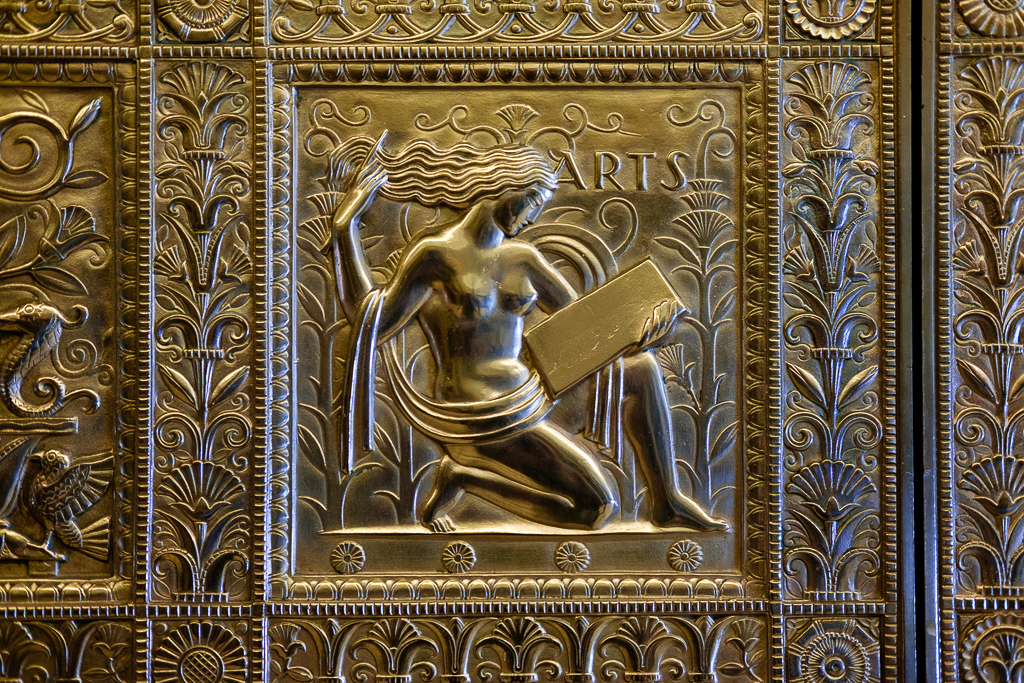
Elevator door detail: Arts. Fisher Building, West Grand Boulevard, New Center, Detroit (Albert Kahn, 1928)

Elevator door detail: Agriculture. Fisher Building, West Grand Boulevard, New Center, Detroit (Albert Kahn, 1928)

Elevator door detail: Chemsitry. Fisher Building, West Grand Boulevard, New Center, Detroit (Albert Kahn, 1928)
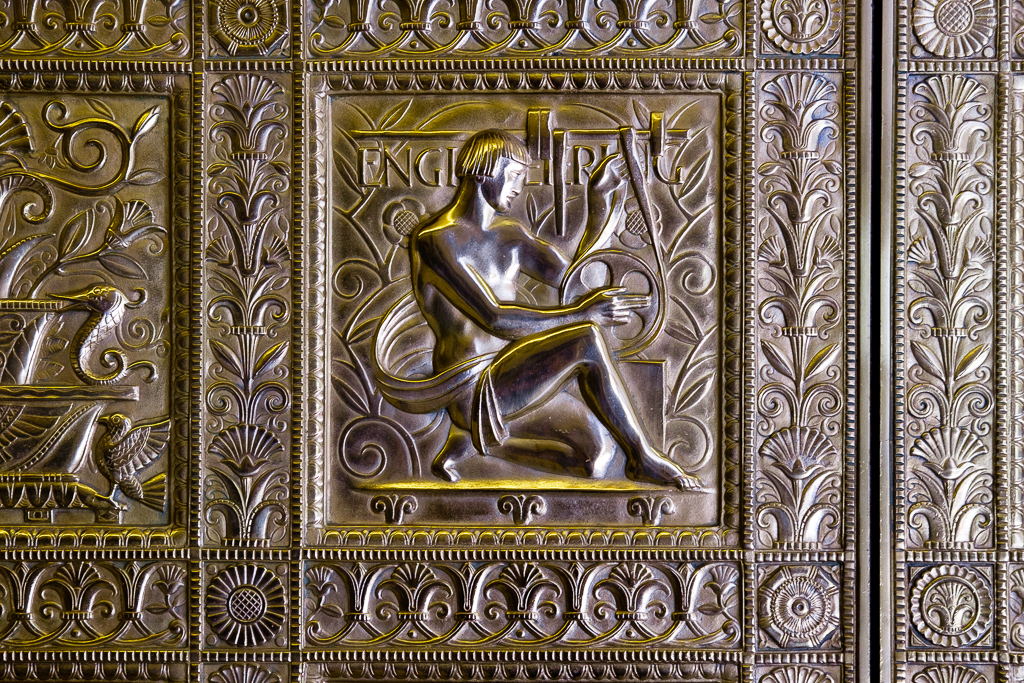
Elevator door detail: Engineering. Fisher Building, West Grand Boulevard, New Center, Detroit (Albert Kahn, 1928)
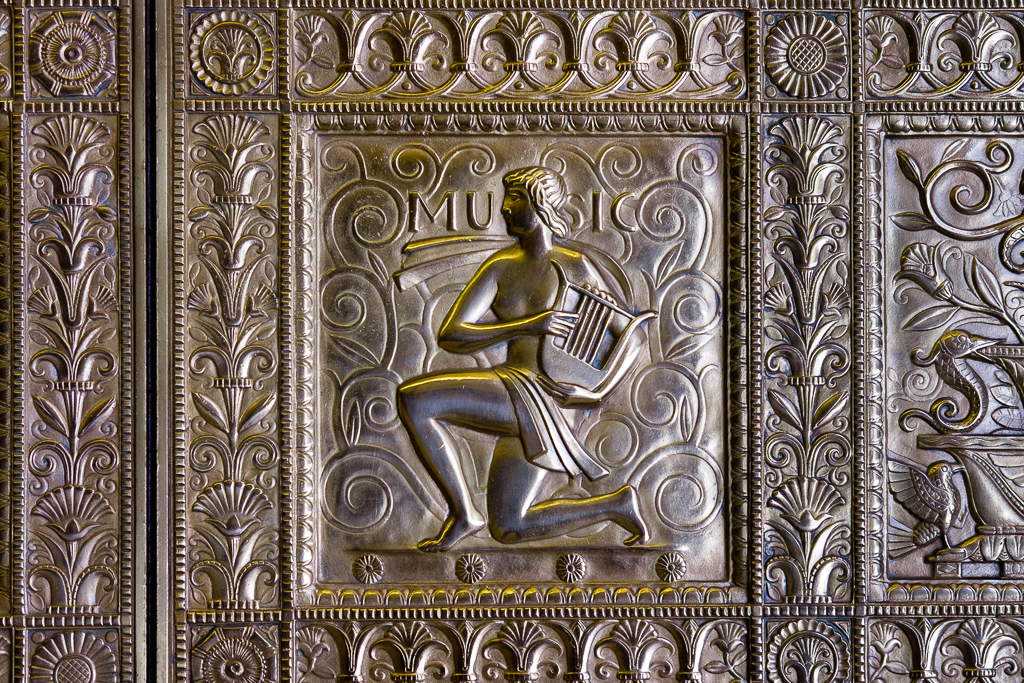
Elevator door detail: Music. Fisher Building, West Grand Boulevard, New Center, Detroit (Albert Kahn, 1928)
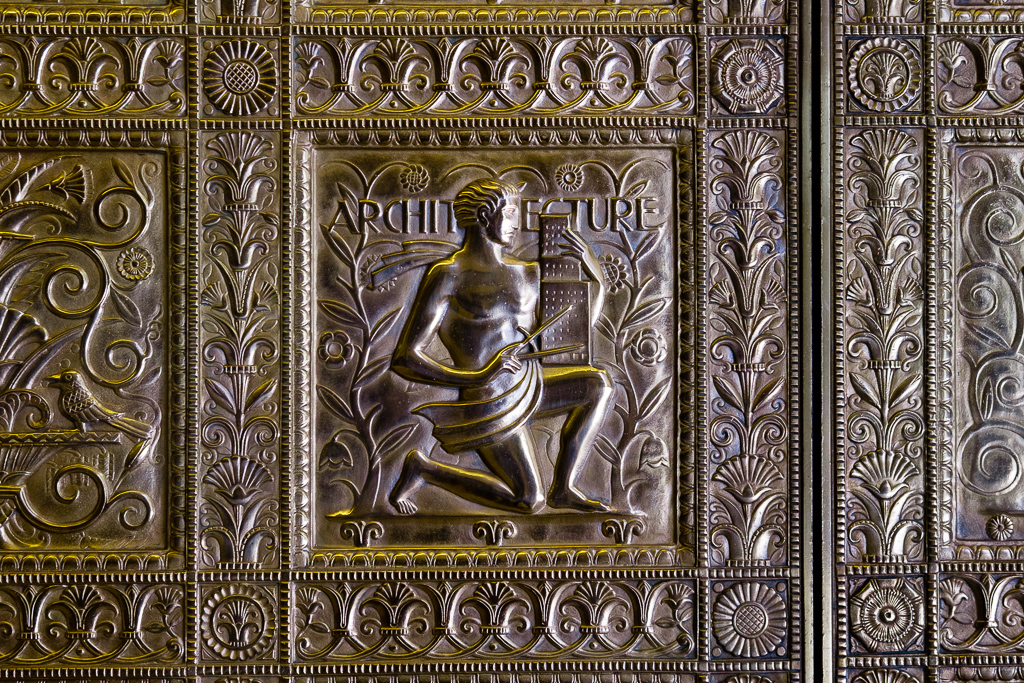
Elevator door detail: Architecture. Fisher Building, West Grand Boulevard, New Center, Detroit (Albert Kahn, 1928)

New Center Building, Albert Kahn, 1931 (now Albert Kahn Building), 7430 Second Avenue, New Center, Detroit
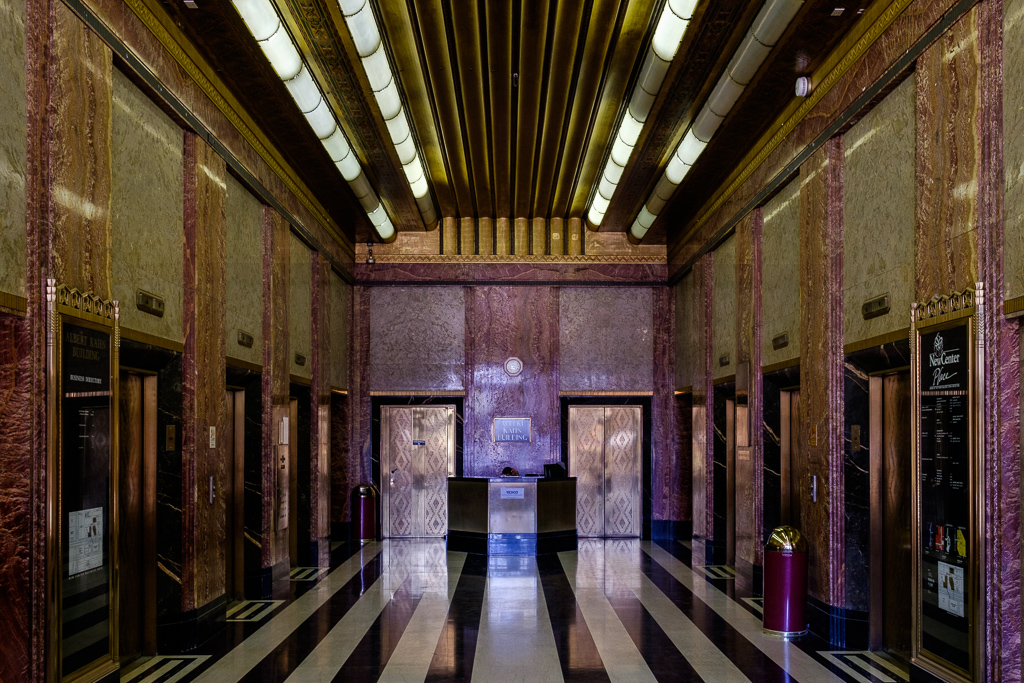
New Center Building, Albert Kahn, 1931 (now Albert Kahn Building), 7430 Second Avenue, New Center, Detroit

